Shooting-Winchester Plant Opening-Closing
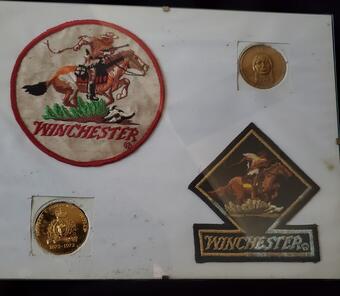
COBOURG PLANT OPENS DOORS TO PUBLIC SATURDAY
Reprint from Cobourg Sentinel-Star June,1970
This is Winchester Canada's big week in Cobourg. The company and its 265 employees have just moved into their new 86,000 sq. ft. plant on Brook Road North, and on Thursday official dedication ceremonies will be held. This Saturday - June 13 - citizens of Cobourg and district are invited to visit the new plant and see how world-renowned Winchester and Cooey guns are made. Employees were the first to open the celebrations with a big family tour a few weeks ago.
On Thursday, with Cobourg resident and Canadian president and general manager John E. Feldhaus as host, the new plant will be dedicated at 2 p.m.. Attending will be Alex Carruthers, MPP, Durham, Russell Rowe MPP., Northumberland, Mayor Jack Heenan and members of council, with Rev. George Malcolm, St. Andrew's Presbyterian Church and chairman of the Cobourg Council of Churches giving the invocation.
Special company guests in Cobourg will include Harlow Reed, executive vice-president and chief operating officer of the $1 billion-plus parent U.S. Olin Corp and William L. Wallace, Winchester Group vice-president.
The company has recently moved from its former plant in the town's west end, where it had been located since coming to Cobourg in 1929. Winchester Canada Limited sells a full range of Winchester guns imported from the U.S. as well as those made in Cobourg. There is also an ammunition plant at Cobourg.
Beginning in Toronto as the H.W. Cooey Machine & Arms Co. Limited, in 1903, its founder was a machinery specialist. During World War I, the company produced small arms parts and other machinery, always conscious of quality and good design.
Just after the war Mr. Cooey himself designed the famous Cooey .22 caliber rifle which soon became well recognized across Canada as well as internationally. By 1929, there had been several expansions in Toronto and Mr. Cooey bought a vacant plant in Cobourg and the company came here. During World War II of course, war production was vitally important to the Cooey plant, and out came parts for guns as well as training rifles.
In 1961, when Mr. Cooey died the company was sold to the then Olin Mathieson Chemical Corp., under the Winchester-Western division. Several new lines were brought into company activity, a large expansion of plant and office space undertaken, and employment began to jump from under 100 up to today's 265.
Here's Winchester's Management team
Cobourg's Winchester plant is headed by an energetic management team with Canadian president and general manager John E. Feldhaus at its head.
Mr. Feldhaus joined Winchester Canada in October, 1968 after 18 years with the U.S. parent company. He is a graduate of Westminster College, Fulton, Mo., and has an MBA from St. Louis University, St. Louis, Mo.
In 1950, he became a management trainee with the U.S. company, and moved successively and successfully through positions as a business research analyst, marketing assistant, assistant to division general manager, to marketing research manager, assistant director of sales to a 1967 posting as director of market planning. Just under two years ago, he came to Cobourg to head Canadian operations. In the community, he is a director of the Chamber of Commerce, and involved in church and Boy Scout activities.
Many of the other executives are also well known.
Charlie Thompson, director of manufacturing, joined the company early in 1967, and is a former materials manager at Canadian Trailmobile and project manager at Canadian Westinghouse. He is a professional engineer, graduate of Upper Canada College and University of Toronto.
Frank Moore, director of marketing, has been with the company since 1962. He is in charge of marketing, sales and distribution of Winchester-Cooey firearms and Winchester ammunition throughout Canada. Under his direction also come product service, advertising and public relations, field force, customer service, market planning and the Quebec branch.
Previously, he was a sporting goods manager in Vancouver, a merchandise manager for sporting goods in Winnipeg, then a Winchester field representative for seven years before becoming director or marketing last year.
Jim Morse, controller, has been two years at Winchester. He is in charge of accounting, analysis, office administration. Previously he was a financial analyst with Massey Ferguson and Ford of Canada. He is a graduate of University of Toronto with a BA and MBA.
George Cook, manager of technical services, has been four years with the company, and is responsible for quality control and new product design and development. He was a toolmaker in the U.K., a gun fitter with the British armed forces, and a toolroom foreman in guided missile division of English Electric Company in the U.K.
Harold Nelson, industrial relations manager, since 1966 is known throughout the Cobourg community and is very much involved in a number of community ventures, including the IAPA, Cancer Society and Chamber of Commerce. He is responsible for the usual duties of personnel and labor relations, but also for a special duty of "community relations". Previously he was with Canadian Westinghouse in personnel work.
Bill Long, manager, ammunition manufacturing, has been with Winchester since 1962. He was in the Canadian armed forces from 1943 to 1959 and was then ammunition plant superintendent for Gevelot. He is commanding officer of the local Air Cadet squadron and a member of the education branch of the RCAF Reserve.
Costs $2 Million
Total cost of the new Winchester plant is well over $2 million. When work began on the 50-acre site last summer, costs were estimated at $2,198,000.
Ontario Development Corp, a provincial government agency, granted a $250,000 forgivable loan to help finance the project; the loan does not have to be repaid, provided the company meets certain conditions over a six-year period. It was provided under the province's "Equalization of Industrial Opportunity Program".
*********************
45 Winchester employees over 15 years with firm
Reprint from Cobourg Sentinel-Star June, 1970
Winchester Canada is proud of its many long service employees. While it has been a steadily growing company - now with 265 people or three times its figure of 10 years ago - there are still several who have been working with the company from its earliest years in Cobourg. Steve Niles and Walter Lloyd both started within a few days of each other in October, 1929 with H.W. Cooey Machine and Arms Company Limited. They now have nearly 41 years service.
George Dawe joined Cooey in 1931; Albert Dawe in 1934. By June 18 this year there will be 18 employees with over 25 years service. That's the anniversary date of Maurice Alderson's joining the company in 1945. There are 44 Winchester people with 15 years or over with the company; 54 with 10 years and over. Following is the list of present-employees with 10 years or over service with Winchester or Cooey, and the dates of their joining the company:
OVER 40 YEARS
1929 Steve Niles Walter Lloyd
OVER 30 YEARS
1931 George Dawe
1934 Albert Dawe
1937 Harold Mason
1940 Harry Lamble Howard Boundy Hayden Lean
OVER 25 YEARS
1941 John Hilliard Clarence Hynes
1943 William Lingard Laura Batchelor Phyllis Cochrange
Erwin Hie Carson Andrews Norah Wilby
1945 Neil Hobart Albert Speirs Maurice Alderson
OVER 15 YEARS
1946 Louis Davey
1947 Ruby Kemp Ruby Lean Marion Long John Ling
1949 Mary Bourgeois George Heeley John Wielonda
James Ford John McEntee
1951 John Kniff Cecil Sherwin Ruth Bolderstone
1952 Charles Dewey William Wamsley Herbert Kniff
Helen Oliver Phyllis Ling Ralph Farrell
1953 Irene Dawe Austin Gall Reta Wood Bernice Massey Jack Bell
1954 Edward Bell Patricia Petruk
OVER 10 YEARS
1957 Dora Boundy Frank Ferguson Edith Ford
1958 Arnold Holdsworth Kevin Perrow Grace Griffiths
Hendricus Jacobs
1959 Douglas Sopher Henry Raggers
1960 Owen Cooney
*********************
Winchester Closing Will Change Their Lives
BY SUSAN EDWARDS
Reprinted from Cobourg Daily Star October 9, 1979
Winchester Canada in Cobourg is closing at the beginning of the new year. The assembly and manufacture of guns, rifles and ammunition presently employs about 300 people in a town of 11,000.
"The prospect of being unemployed bothers you," said a woman employee who asked not to be identified, "because you don't know what's next." The employee, a woman in her early twenties, works in the ammunition plant assembling and packing .22 caliber bullets. She has worked for Winchester in both the firearms and the ammunition factories for five years.
“You don't know how many shifts you'll be on," she said. “Right now I'm in a car pool with some people who work here and my babysitter knows my schedule." She lives with her husband and young child in a hamlet near Cobourg. They have their own home and have a small loan to pay.
"There are going to be a lot of us out there looking for work," she said. "Chances may not be that good of getting something right away. You put your name in a few places and wait and see."
Winchester Canada is the second biggest employer in Cobourg. According to the town's figures for 1977: General Foods Ltd. employs 925 people, United Tire 230, General Electric 210 and General Wire and Cable around 200. There are a number of smaller factories with work forces of less than 100.
The employee said that she will be looking for a job in a plant after Winchester closes. She likes working in a factory, she said. "The pay is better. You come to work, do your job, leave and you don't have to think about it ". Although she has received her notice - along with 46 other employees who will be leaving November 23 - she has not actively searched for work because there is a possibility that the manufacturing business may be purchased by another company.
According to Norman Cant, the director of operations for Winchester Canada, a company, so far unnamed, has offered to help finance a deal which would include the participation of both management and workers. A similar arrangement was made with the employees of Pioneer Saws in Peterborough a few years ago when it was scheduled to close.
Ever since the Winchester management announced on August 21 that the manufacturing and assembly plants would be phased out, Cant has been looking for a new owner. At the time of the announcement, Cant said that the company had three options to investigate for the disposal of the physical facilities.
The first, he said, would be to find a group which would be interested in purchasing the business as an on-going concern. "We want to sell the plant with the equipment and the existing labor force."
The second, he said was to sell the plant, the machinery and the expertise of the employees to a metal wood industry.
The third option which he mentioned was to sell the company's assets, the buildings, which consist of two plants, one with 122,000 square feet and the second of 12,000 square feet, the equipment and the 63 acres of land, 32 of which are serviced, as separate parcels.
However, in August, Cant said that the management "was not ready to take that direction yet." It is November and he is still negotiating to sell the business.
Cant has a vested interest in finding a company to purchase the firearm business. As soon as he winds up the affairs of Winchester Canada sometime towards the end of February, he too will be looking tor work. Cant who is fiftyish and has a house and family in Cobourg said "I'm energetically seeking a new owner because that is the way I'm going to remain employed." He added immediately, "I firmly believe that this business could make a go of it."
His statement is not just wishful thinking. The H.W. Cooey Machine and Arms Company operated in Cobourg from 1929, the year it moved from Toronto, to 1961, when the Olin Corporation bought it and placed it under the supervision of the Winchester Group, whose head office is located in New Haven, Connecticut.
In fact New Haven is the place where the decision to close the manufacturing and assembly plants of Winchester Canada originate. The sales and distribution offices will remain open.
The Winchester Group is one of five within the multi-national Olin Corporation, whose head office is in Stamford, Connecticut. Apart from the Winchester Group which produces fire-arms, ammunition and components for military, industrial and recreational use, the Olin Corporation also owns chemical, paper, home, ski and water businesses in 23 countries around the world.
According to Cant, each group within the Olin Corporation. including the Winchester group, operate as a separate entity and must "stand on its own feet." Winchester however has not been standing firmly for a while. Duncan Barnes, a spokesperson for the Winchester Group in New Haven, said that the company has not shown a profit for several years.
He said that the group's losses were one of the reasons that Olin’s third quarter profit for 1979 dropped to $10.8 million from $18.3 million in 1978. He said that the gains in the other groups covered the losses in Winchester. The poor profit record of the Winchester Group, Cant said, resulted in a study in early 1978 of its world-wide operation in order to learn "what the company was doing wrong and what it was doing right."
The report, Cant continued. recommended that the group concentrate on manufacturing the higher-priced recreational firearms rather than guns and rifles throughout the price spectrum. The operation in Cobourg produces the lower priced Cooey range of firearms which, Cant said, no longer fits into the future of the Winchester Group.
Cant went on to say that because the lower priced firearms are being discontinued in the United Stales as well as in Canada, there is room in the American plants to make the Winchester rifles and guns which are presently assembled in Cobourg. The parent company's decision to specialize, Cant said, also fit with the fact that the assembly division of Winchester Canada became unprofitable when the Canadian dollar started to decline.
He said Winchester which was a net importer of goods was losing 14 to 17 per cent on the dollar whenever a shipment of parts for the Cobourg plant crossed the border and each time Winchester Canada transferred money to the Winchester Group in New Haven. Consequently, in August, Winchester Canada announced that production would be phased out in an orderly manner over the next few months."
One woman employee remembers that Tuesday afternoon. She said that they had heard a lot of rumors beforehand. "We thought the place had been sold and that the management had not told us. When we heard that it was going to close down we said That’s it."
Joe Leduc, a shipper, and the vice president of the International Association of Machinist-local 788 had also heard rumors before the announcement. He thought that there would be layoffs and cut backs, but not that the business would be closed down. He said that he was shocked when he heard the announcement.
"Then after about two weeks I became disappointed. Disappointed because it seems that a multinational corporation has come into this country, taken what it wanted and pulled out. When the company fell onto hard times in Canada, it left." Perhaps, Leduc is luckier than most of the 207 people who presently work in the plants. As he sits on the union committee he will remain on the job until the end of the year.
Nevertheless, he will be out of work in January and despite an array of working experience which includes waiting on tables in a cocktail lounge, driving an ambulance, guarding prisoners and working in a garage, the 51- year-old Leduc thinks that he will have a hard time finding work. "It's tougher now to get a job,” he said. "My age will be a problem."
Leduc has not started to look for another job yet as he has not been given his notice - Winchester is giving 12 weeks notice to every employee - and he said it would be unethical to look for work until he has received it. Although he owns his own house outright and does not owe any money, Leduc doubts that he would be able to manage on less than his present pay cheque.
"I don't think I live extravagantly or have a high lifestyle," he said, adding, "I live on the lean now." "I would take a job within a 25- mile radius of my house, he continued. "I don't want to move. I have worked all my life for the home I have now."
Winchester is trying to help Leduc and others find work. Allan Jeffers, the director of administration and personnel, said that the company has joined forces with Employment and Immigration Canada, and together they have organized two committees, one for salaried and one for hourly-rated employees to place people in new jobs.
The committees are staffed by two members of the group concerned, two people from management and the chairman of the program, Mr. Clifford Cadd, an outsider with no interest other than to help. Jeffers said that the employees are asked to complete a questionnaire listing their skills and interests, then Cadd, he continued, "goes out and pounds on doors."
The company is also holding outplacement seminars for managers, technologists, and supervisors, who, too, will soon be out of work. Jeffers explained that the seminars are conducted by a representative from Olin. Their purpose, he went on, is to put people in the right frame of mind to find a new position through self-analysis and evaluation, resume and letter preparation and recruitment and interview plans.
Finally Winchester has taken the management from other local industries on a tour through the two plants to show them the variety and types of skills which their employees possess, Jeffers said. Jeffers is concerned about the problems the employees will face while looking for work. In the new year, he will be facing them too.
Although Jeffers, who is 40, married and has two children and a house to support does not want to be unemployed, he said that he was not frightened by the prospect "I'm going to be as positive as possible,” he said. “I will move if a good career opportunity develops. I'm not closing the doors to any job.”
It has been the union, the International Association of Machinists, local 788, which has been actively seeking support from all levels of government for any company which purchases the firearm business from Winchester Canada. Ben Burd, the president of the union and the union committee has talked with Alan Lawrence, the federal minister for corporate and consumer relations and Larry Grossman, the provincial minister for industry, trade and tourism. Both promised unspecified aid to the company which offers to purchase the firearm business.
Burd and his committee have also approached the Cobourg town council to ask for a 50 per-cent reduction in municipal taxes for the first year or years to the company which purchases the business. Members of the council said that they thought the proposal had merit and that they would discuss it further. In spite of the efforts of management to find a buyer and the union to round up government support for it, the business remains unsold and the company is starting to wind down its operations.
Thirty-six people will he laid off on November 10 and 47 on November 23. By the end of December, all 207 plant employees will be out of work as well as about 30 of the office staff. In Cobourg with retail sales of approximately $50 million a year Winchester's annual payroll of $3.5 million will be missed; however, probably not as sorely as the individual pay cheques.
"I'm working now and getting a pay cheque," said one woman employee. "When I don't have my pay cheque, then I will know what it is like." Right now, when I go shopping. I don't worry about prices " she continued. "When I am through here, I will have to think about them."

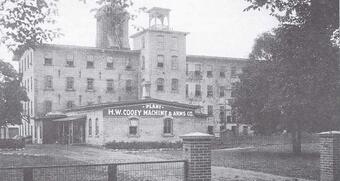
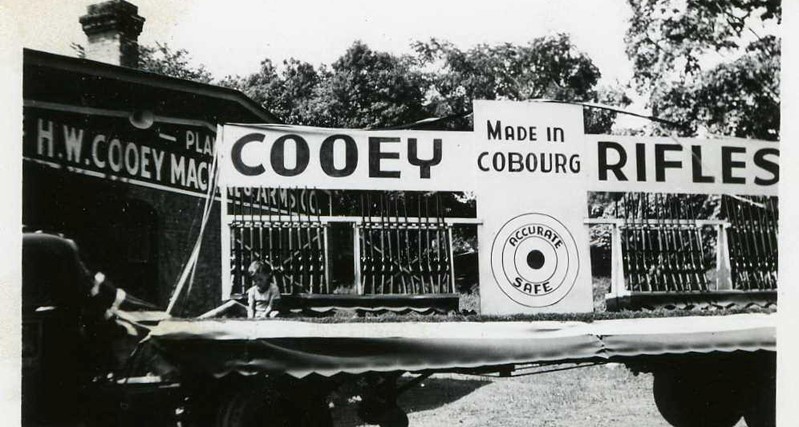
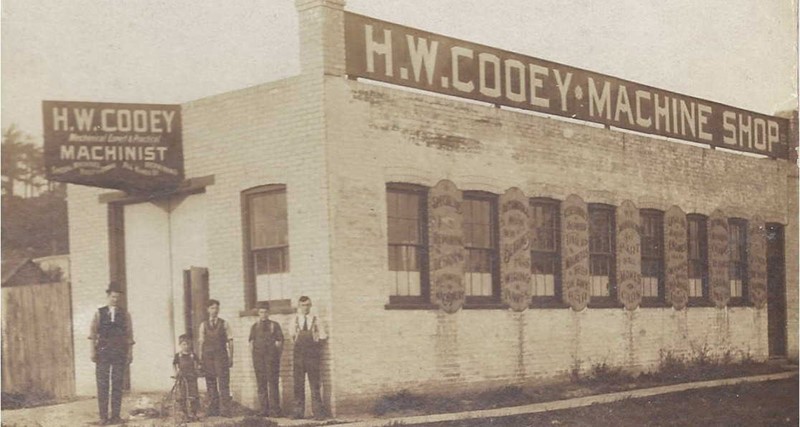

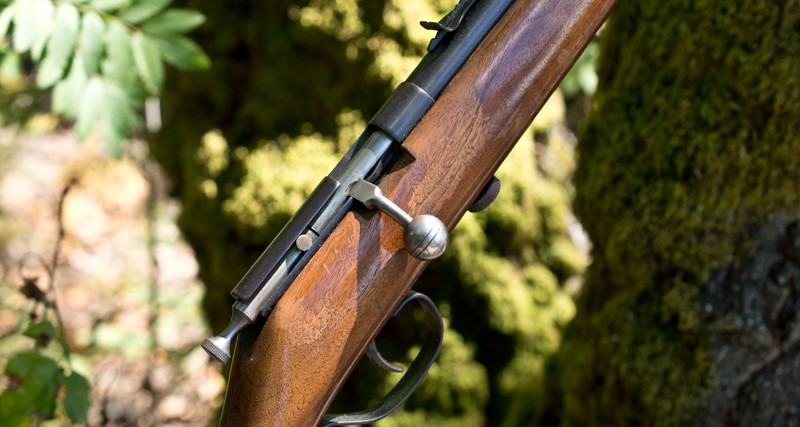
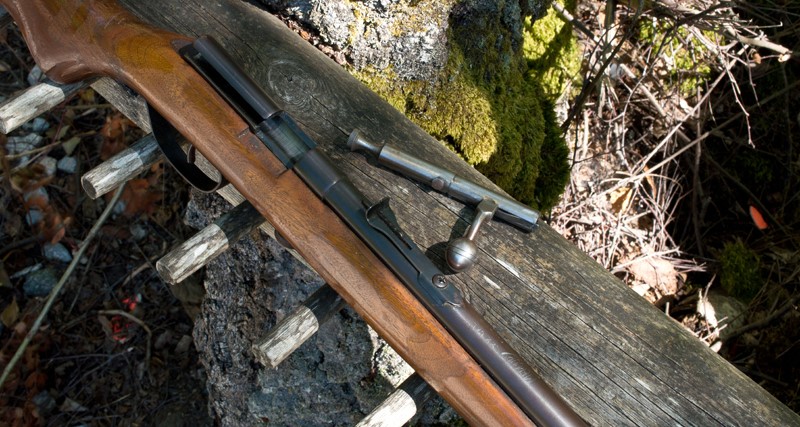
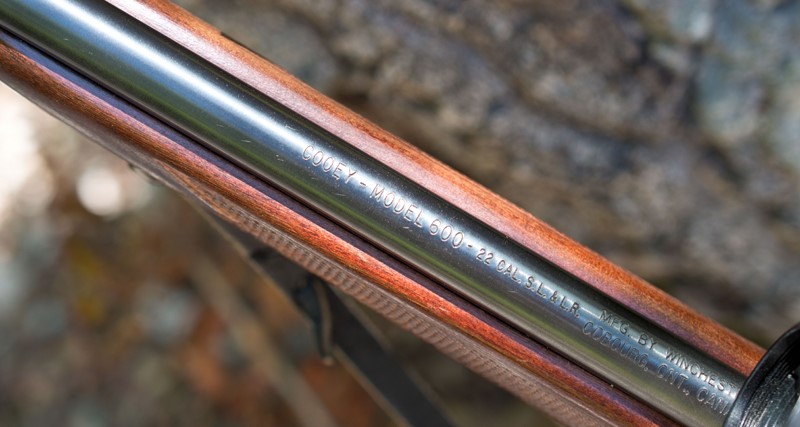
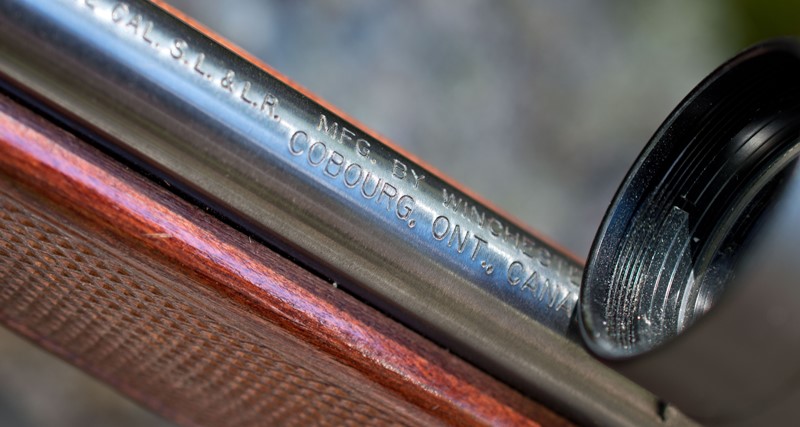
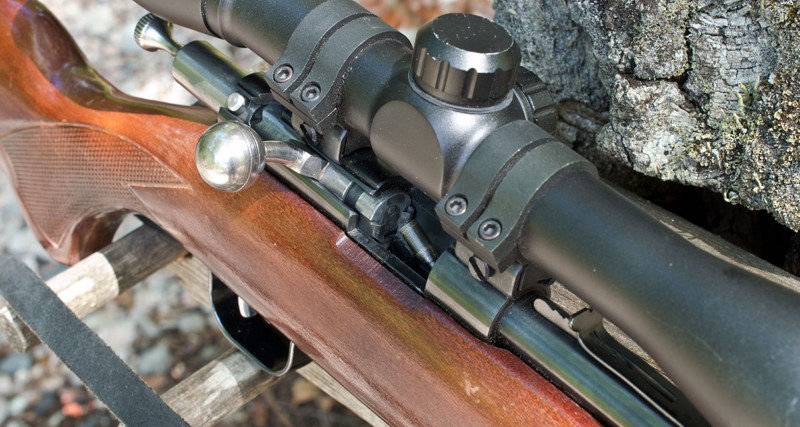
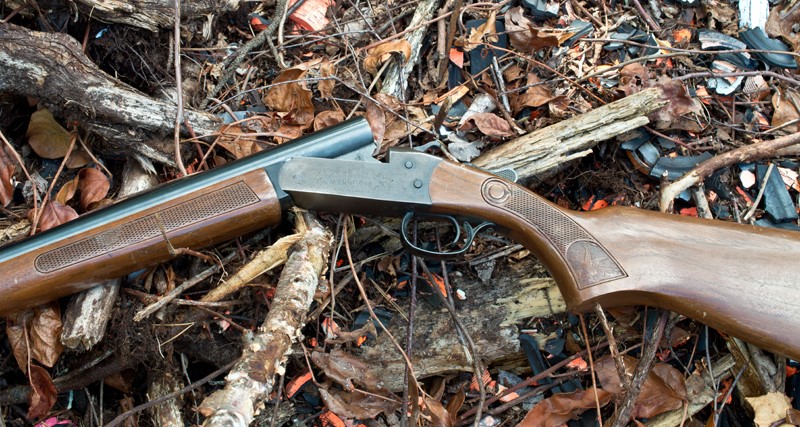


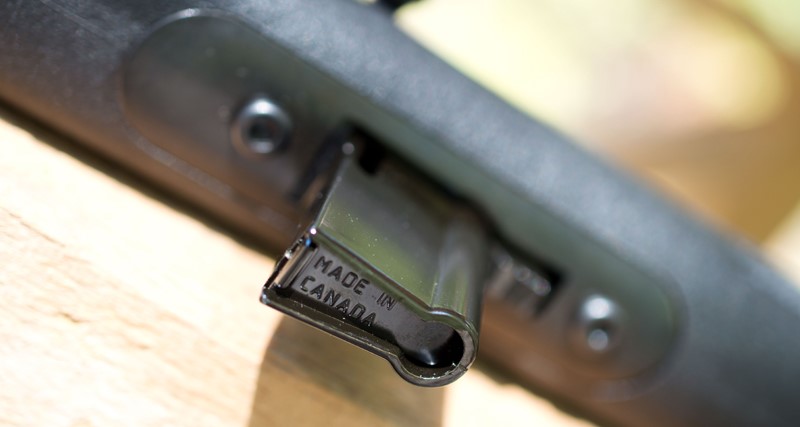

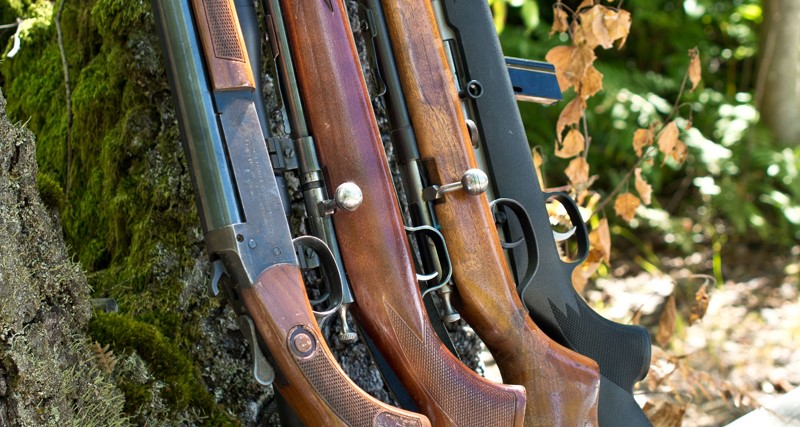

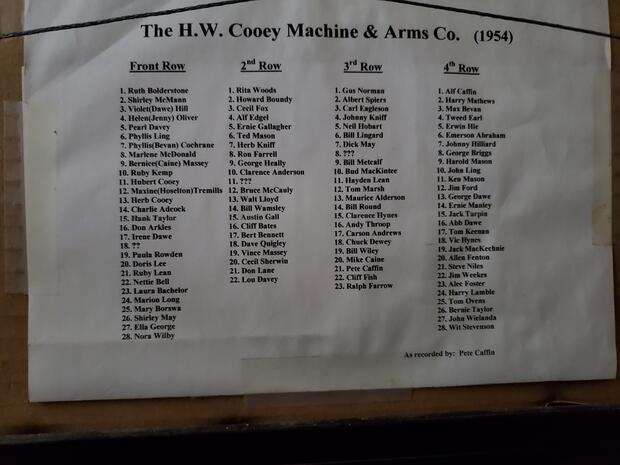
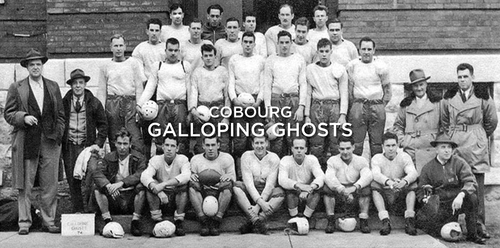

need parts
Hi there how are you. well im looking for parts for 12 Gauge-30 inch full choke. on the front holder when the hand grab the gun, thee is a braket that attach the pice to the gun I need tha braket and screws if you have them please my grand father has or had a collection of guns all from your company some to old to even read the writing in it I would like to re-store them i can send you pictures of them if you like to make sure I order the proper parts. I hope you can help thank you for your time and hope to heard from you soon Thank you again and have a great day Tony